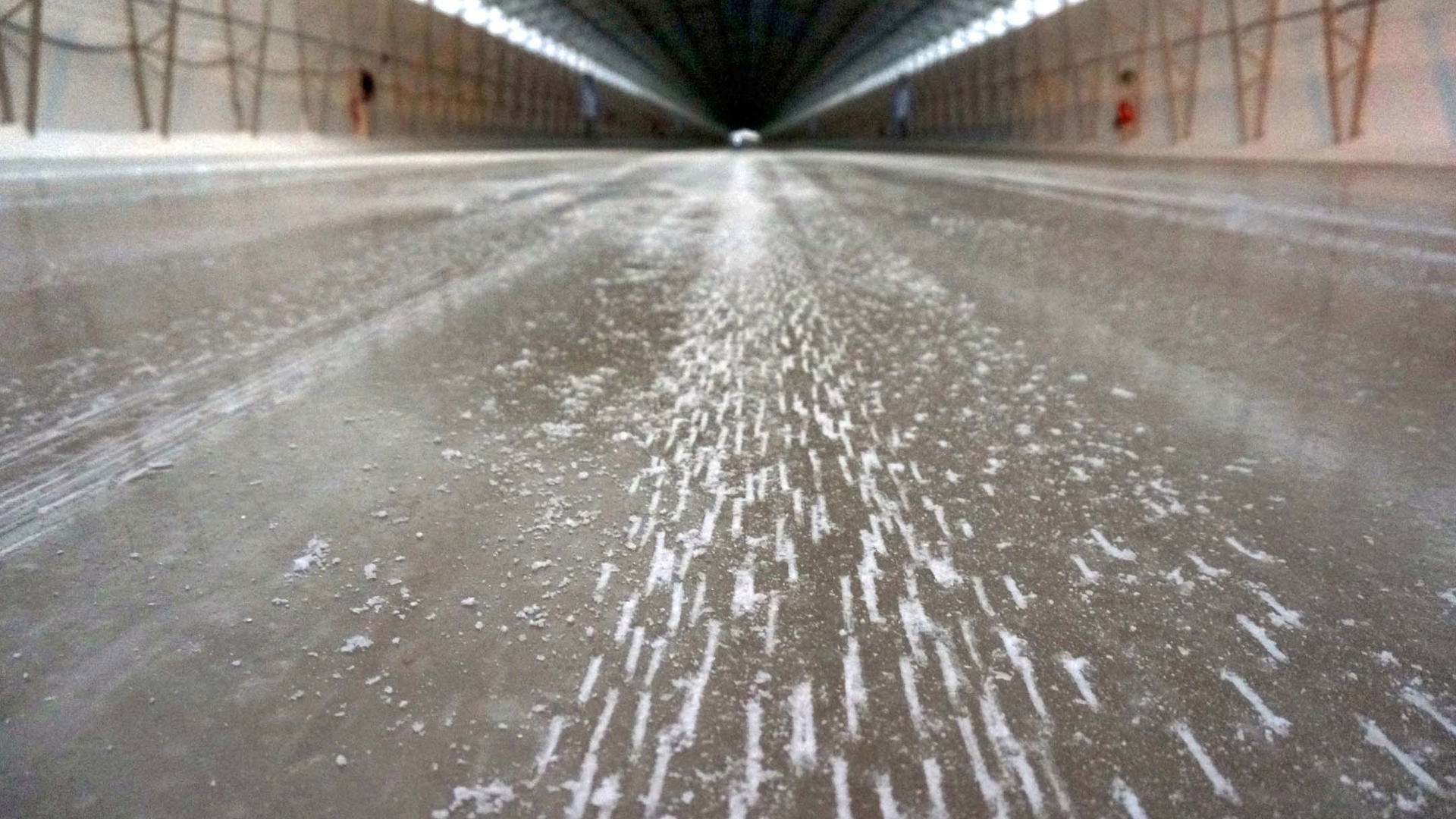If you live anywhere that gets nasty weather, you’re familiar with the trucks that lumber along the roads and dump whatever it takes to keep everything moving. Exactly what they’re dropping will depend on where you are, what the weather’s like, how much money your municipality has to spend, and what kind of trucks it owns.
Of course, you also have to think about what that stuff is doing to your vehicle. Here’s a rundown on what might be out on your roads.
Rock Salt
Plain rock salt, properly known as sodium chloride, is the great old grandpa of the snow-plow set. It’s cheap, it’s easy, and because it’s been around so long, virtually every municipality has equipment to spread it. It’s also just lying in wait and smirking until it gets its salty hands on your vehicle.
Plain water freezes at 0°C. Salt lowers its freezing point, so it stays liquid instead of turning to ice when the thermometer drops below that. Salt needs to mix with the ice to be effective, and doesn’t do much if it’s just sitting on top of it. The streets can still be slippery if you’re the first one out after the salt truck has passed, because it’s the traffic driving over the salt that works it into the ice so it can do its business.
Sodium chloride’s major drawback is that it’s an environmental nightmare. It kills vegetation and pollutes waterways, and it destroys concrete and rusts metal. If the roads in your area are salted, wash your vehicle frequently in winter, paying special attention to the undercarriage. Take it to the do-it-yourself, or use a pressure washer, and spray under the vehicle until the water runs clear.
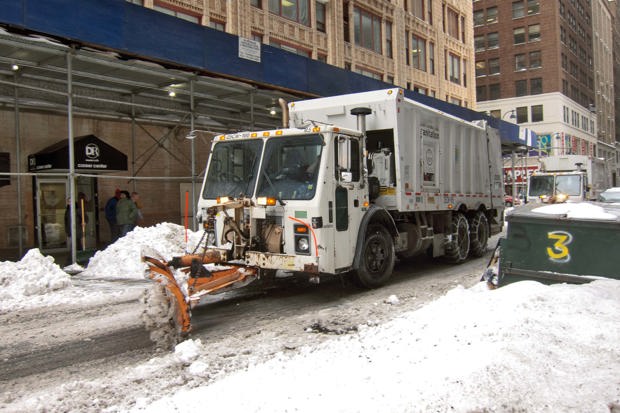
Salt Brine
The name says it all: liquid mixed with sodium chloride, and sometimes other de-icers, sprayed on the roads with specialized trucks. It’s not applied to existing ice, but rather, it’s put down before bad weather is expected, and it dries and sticks to the road. When snow or freezing rain falls, that thin dried-brine layer prevents ice from sticking to the asphalt, making it easier for plows to scrape the surface clean.
Environmentally speaking, brine is better than rock salt, because less is required. It also stays where it’s put, at least initially. But it still washes onto the shoulders and into whatever green stuff grows alongside once the ice melts. When the weather warms up, that brine-salt coating gets moist and very sticky, and your tires will happily propel it into your vehicle’s nether regions. In addition to turning your sheet metal into Swiss cheese, it also attacks wiring, which can affect your ride’s electronics. Some jurisdictions add an anti-corrosion solution, but don’t count on that to save you. As with rock salt, keep your vehicle’s underside clean throughout the winter months.
Pre-Wetted Salt
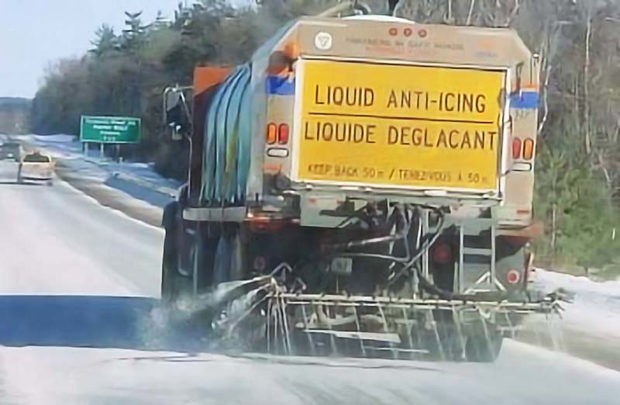
A combination of the previous two, this is rock salt sprayed with salt brine before it’s deployed. Rock salt bounces when it hits the pavement and often vaults right into the ditch, where it doesn’t do anybody any good. Pre-wetted salt is more likely to stay where it lands. The brine also speeds up the process of turning ice into salty water. This salt-and-brine combination is just as bad for the environment, and for your vehicle, as either one alone.
Beet Juice
Beet what? Yes, some municipalities are spreading vegetables on the roads. It’s the liquid left over when sugar beets are refined into sweetener. It’s mixed with salt and used like brine, but it’s a little better on the environmental side.
It’s similar to salt-and-water brine, but beet juice is stickier – it’s basically thin molasses – and it does an even better job of gluing the thin salt layer to the asphalt, making it more effective. It can also lower the freezing point to −32°C for better cold-weather protection. It’s more expensive than mixing salt with water, but it can reduce salt use by up to 60 percent. Some municipalities save it for areas with extra environmental concerns, such as roads that run through wetlands or cross rivers.
Beet juice isn’t the only foodstuff doing double duty on the roads. Depending on what’s available from local suppliers, some municipalities may use cheese brine, pickle juice, or spent grain mash from beer or liquor production. As far as your vehicle goes, consider beet juice to be an even stickier method of adhering salt to your sheet metal.
De-Icers
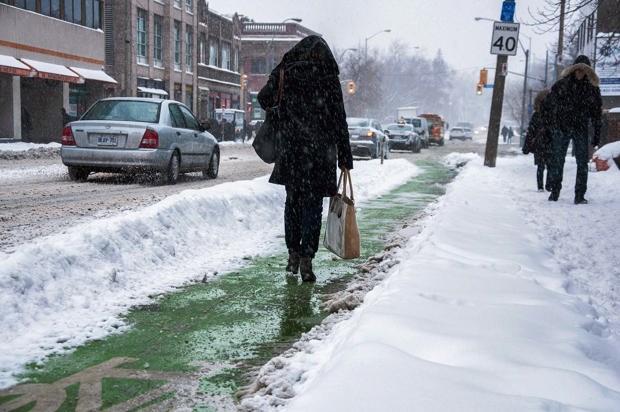
Rock salt isn’t the only thing that’ll turn ice to water. There are other de-icers that work even better, including magnesium chloride, potassium chloride, and urea. Rock salt gives up starting around −12°C, but calcium chloride keeps working down to about −30°C, and creates heat when it gets damp so it works even faster. Meanwhile, potassium acetate can do its job when the temperature dips as low as −60°C, and it’s biodegradable to boot.
But you never get something for nothing. Calcium chloride is about twice the price of rock salt, while potassium acetate costs about eight times as much.
The price of alternatives limits their use, and they’re spread mostly on smaller areas such as sidewalks. However, some municipalities mix them with larger volumes of rock salt for roads. If they end up on your vehicle, they tend to break the metal’s molecules apart, and they can potentially do more damage than sodium chloride alone.
Sand
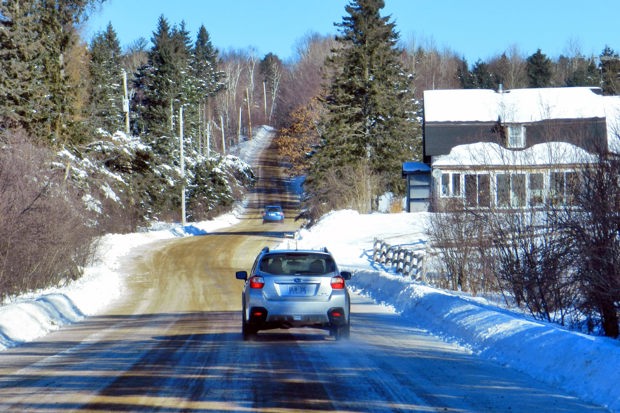
At the coldest temperatures, nothing’s going to turn ice to liquid, and that’s when sand comes in. Rather than melting the ice, it sits on top and helps give drivers some traction. It doesn’t present much of an environmental issue – other than the fact that, worldwide, we’re starting to face a global shortage of sand – although it has to be swept up or shovelled away once winter has passed.
It’s reserved for Canada’s most frigid areas, since it would have to be reapplied too often in regions that regularly thaw and freeze. The resulting accumulation could clog the storm drains. Other than its abrasive effect when it’s tossed by the wind or other vehicles driving alongside, it’s not a hazard for your fenders.
Pickled Sand
Sand has a tendency to clump if it gets moist, which can gum up the sanding trucks. To avoid clogging, it’s sometimes mixed with salt, at five to 10 percent of its volume, and the mixture is known as pickled sand. While it’s far less of a problem than a dump of 100 percent rock salt – again – wash your vehicle regularly if your municipality uses it.
Extra Protection
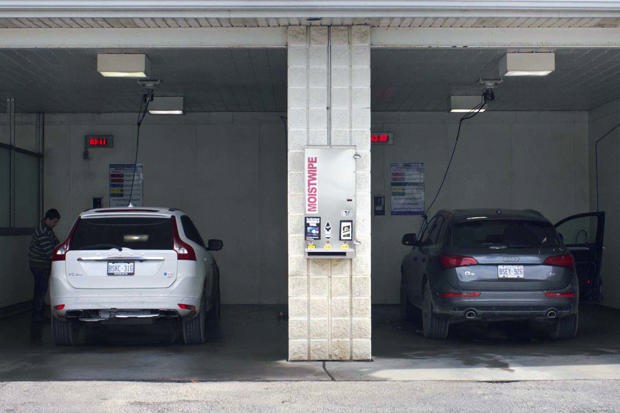
All dry de-icers are hygroscopic, meaning they absorb moisture, since they need at least a bit of liquid to start the process. That’s bad news for your vehicle, since even a dry layer of salt dust will eventually draw humidity when the temperature warms up, and that salty liquid is hungry for metal. Invest in undercoating or oil spray before winter, and make sure to get all the nooks and crannies: inside the doors, behind the tail lights, and inside the tailgate if you drive a truck. Wax your vehicle often, and touch up stone chips as soon as they happen. Let salt and de-icers do their job on the roads, not on your ride.
